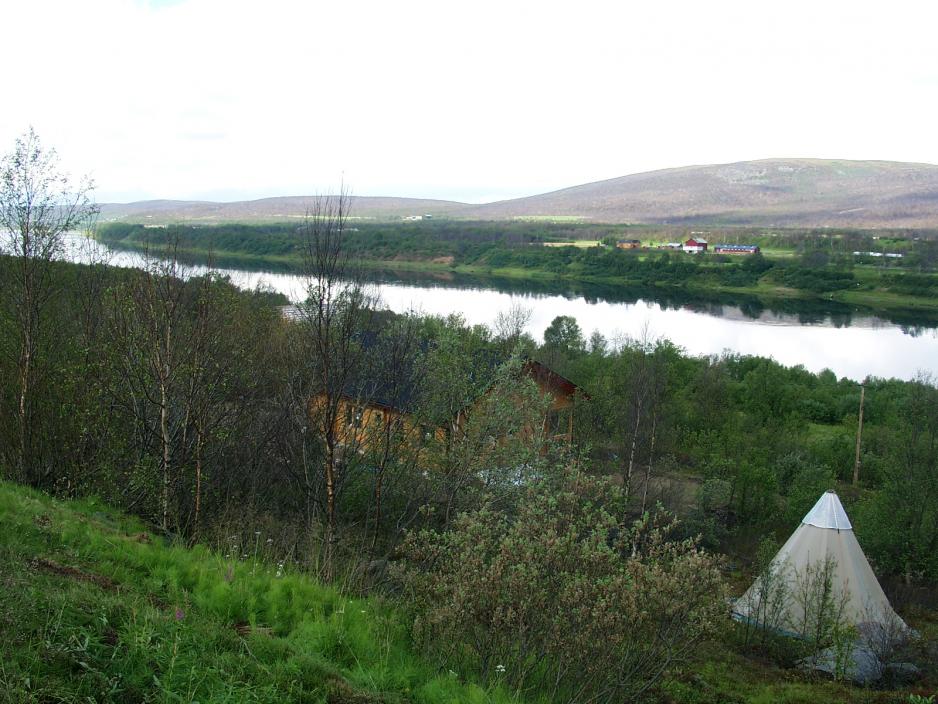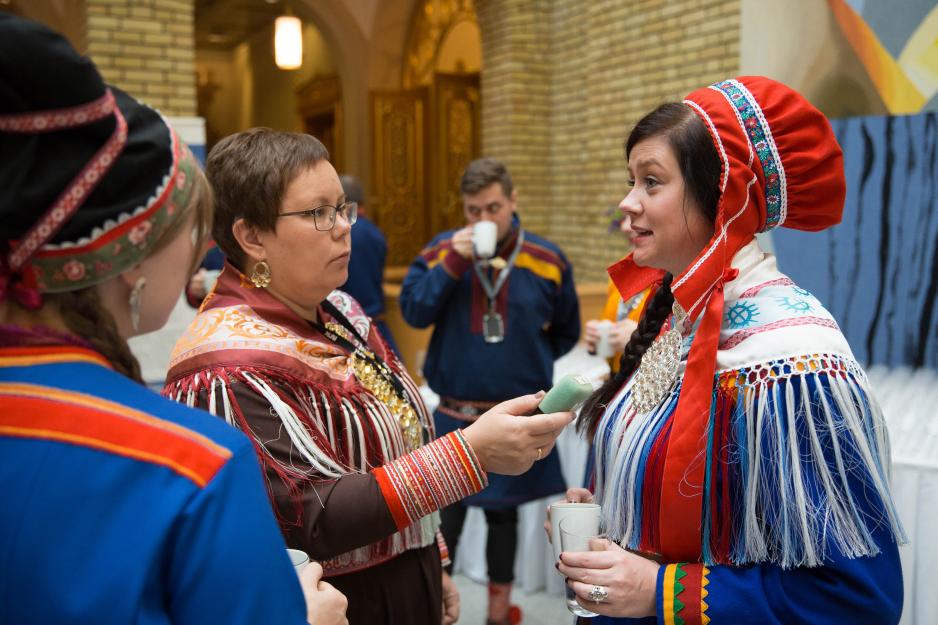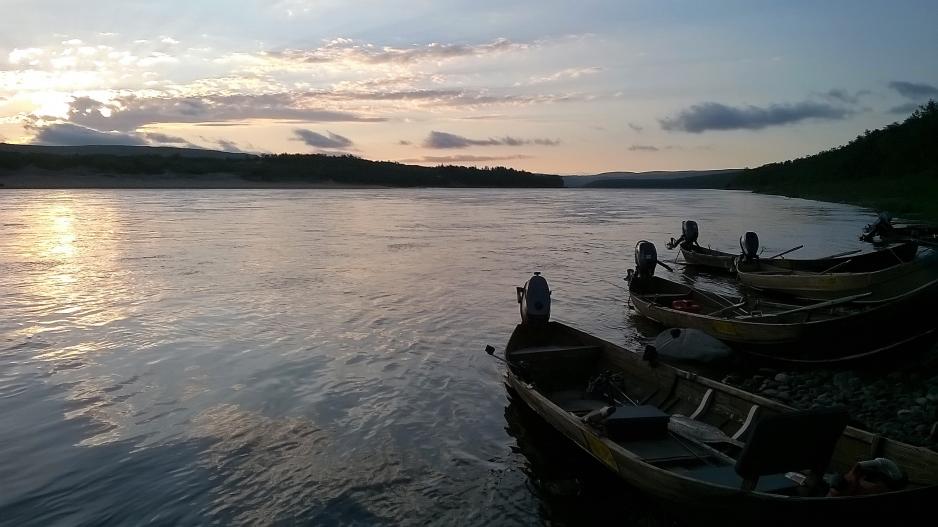- Science must contribute to traditional or local communities

- Combining science and traditional knowledge, as well as respecting each other’s experiences would create better decisions in development projects.
Christina Henriksen, Member of the Sámi Council and the Sámi Parliament in Norway is quite clear.
- While climate change is opening up northern regions to business, the human dimension of scientific and industrial projects has been almost absent in the discussion until recently. Especially in the case of the Deatnu (Tana) fishing agreement, the lack of consultation of traditional knowledge holders caused strong protests.
Combining knowledge systems for Arctic development
“For the analyses and impact assessments in the planning phase of bigger industrial projects and in many other cases, we do need both knowledge systems”, says Christina Henriksen, who is also Chair of the Working Group of Indigenous Peoples in the Barents Euro-Arctic Region. As a plenary speaker, she presented her appeal for collaboration at the Arctic Science Summit Week (ASSW) in Prague, Czech Republic, in April.

Ignoring traditional knowledge
The dispute on the fishing rights in the Deatnu river and neighboring fjords is one case, where ignoring local knowledge gave rise to conflicts and legal action. The fjords have been life-saving for the people living there for a long time. However, the dying tradition of sea salmon fishing is under attack not only from fish farms, which are more lucrative and result in regulations on traditional fisheries, but also from neighboring fly-fishers.
Locals “punished” for the depletion of salmon stocks
"If you only rely on the scientific measurements of the salmon population, you will not know who is to blame for salmon stock decreases", Henriksen reasons. The sea Sámi and river Sámi fishermen- and women are punished by the regulations, whereas for instance Finnish merchants continue to sell a great number of fishing licenses and increase the number of tourists.
Adding local experience and history to science
One way of combining the knowledge systems is by integrating scientific measurements on the fjord with the accounts of changes and uses of the areas from reindeer herders, fishermen and others users of these places.
Adding to the scientific component, the local traditional knowledge might show trends or historical changes, for instance in weather conditions. It could also be that the migration of the locals, who have been changing their fishing and herding spots throughout the years, is connected to climatic changes.
Decisions should not be based only on measurements
Referring to the case of the Repparfjord, Henriksen argues that both the local knowledge and the scientific measurements of the sea ecology and trends over time are required. She illustrates: "Local people are not under the sea surface, so they are not measuring these things. However, they know that there are more fish than before. Scientists take the measurements, but you cannot make decisions based on only that."

Sámi protests against the discrepancy in regulations
The local inhabitants have often criticized the discrepancy in regulations concerning the access and use of the rivers. A draft agreement on the management of fishing activities in the Deatnu river was presented in 2016 and stirred up shock and horror for local fishers on both sides of the river, which is the border river between Norway and Finland, who were deprived of their rights.
Sámi parliaments protested due to the lack of inclusion of local stakeholders. One local from the expert group on the management agreement withdrew, because he could not support the draft. Eventually, there was no representation of traditional knowledge. The agreement was adopted in March and is based on measurements and fish counts, while the traditional knowledge was ignored by authorities.
Henriksen elaborates: "It is also a question of power and politics. There is no income for the state in families fishing for their own needs and to provide for the winter. But there is income in selling fishing licenses and renting out cabins. It seems easy to just ignore that and the local indigenous traditional knowledge holders".
Indigenous representatives as equal partners
According to her, "if authorities would consider indigenous representatives, for instance the reindeer herders and users of the land, as equal partners, we would find solutions that are best for everybody, not only the people in the ministries in Oslo or Helsinki. That would be a huge step forward, just through mutual respect and acknowledgment".
Christina Henriksen emphasizes the necessity to acknowledge traditional knowledge at all times: "Never underestimate what a person, who has spent so much time in nature with traditional activities, can tell you". It’s all about learning by doing and doing it all together.
She points out: "Many indigenous peoples are used to being told that their knowledge is inferior and have developed a low self-confidence. They must stop seeing themselves in that way and start to manage traditional knowledge themselves. Scientists cannot just gather traditional knowledge in a box".
Trust in scientists crucial
While many scientists conduct research in the Sámi homeland, known as Lapland, there have been a lot of bad examples in the past. Henriksen suggests that these experiences explain the sometimes delayed response to research inquiries. To build up trust between indigenous knowledge holders and scientists is therefore crucial for successful collaborations.
"In a project intervening in indigenous peoples’ areas, indigenous knowledge must be included". Henriksen urges researchers: "And believe them when they say that they cannot go through that part with the reindeer on migration, because of this and that. And that they require clean water in the fjord to live from the fishery and it has just recovered".
Reindeer herders’ experiences with climate change
The project ‘EALÁT’, which conveys the experiences of reindeer herders, their local knowledge and adaptations to climate change, is a successful example of combining traditional knowledge with science. In several regions, workshops in reindeer herding communities were held to gather and discuss observations and changes. They were based on case studies and focused on traditional knowledge.
The joint organization of EALÁT is indicative of the comprehensive collaboration. The project is supported by the Arctic Council and organized by the Association of World Reindeer Herders (WRH), in close cooperation with the International Centre for Reindeer Husbandry (ICR), the Reindeer Herders’ Union of Russia (RHUR), the Sámi Council, and the Sámi University College (SA).
Let’s develop our communities together!
"So you want to contribute to development in the Arctic? Then buy our products and make sure you buy the real thing. Let’s develop our communities together”, says Henriksen.
